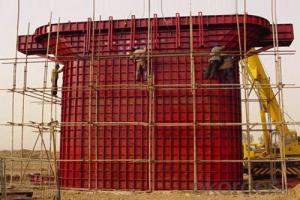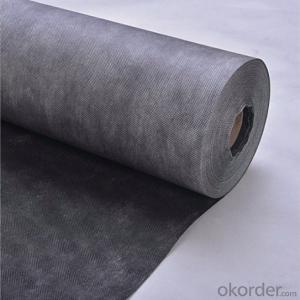Steel Formwork for High Residential Buildings with Recycling
- Loading Port:
- Tianjin
- Payment Terms:
- TT OR LC
- Min Order Qty:
- 200 pc
- Supply Capability:
- 100000 pc/month
OKorder Service Pledge
OKorder Financial Service
You Might Also Like
Introduction for Steel Formwork :
Steel Formwork:used in highway,railway,bridge,tunnel and shearing wall,etc.Our company CNBM which is one of the largest State-Owned Enterprises in China which established in 1984 , has gained the confirmation from the specialist of China Architecture Scence Institute, and has been used by many building operation units and has been highly praised.In 2014, the total turnover volume of CNBM exceeds US$410 billion dollars with a total staff of 180,000. CNBM is listed in the World Top 500 Enterprises !
Characteristic for Wholly Steel Formwork :
1. High Smooth Surface
2. Convex ling for Edge Rib
3. Specialized Connection Pin for Edge Rib Connection
4. High Stiffness for Steel Surface
5. Light Weight for saving producing cost
6. Fast Separate and Easy transport
7. Recycling using
8. Scientific and Reasonable design to meet different working condition
Parameter and Specification :
Code | Size (mm) | Weight (KG) | Code | Size (mm) | Weight (KG) |
P12021 | 1200*2100*55 | 102.96 | P4018 | 400*1800*55 | 28.3 |
P12018 | 1200*1800*55 | 88.4 | P4015 | 400*1500*55 | 23.8 |
P12015 | 1200*1500*55 | 74.15 | P4012 | 400*1200*55 | 19.1 |
P12012 | 1200*1200*55 | 60.11 | P4009 | 400*900*55 | 14.6 |
P10018 | 1000*1800*55 | 76.01 | P4007 | 400*750*55 | 12.3 |
P10015 | 1000*1500*55 | 63.96 | P4006 | 400*600*55 | 9.95 |
P10012 | 1000*1200*55 | 60.11 | P3018 | 300*1800*55 | 20.7 |
P10009 | 1000*900*55 | 39.32 | P3015 | 300*1500*55 | 17.4 |
P9018 | 900*1800*55 | 70.89 | P3012 | 300*1200*55 | 14 |
P9015 | 900*1500*55 | 59.47 | P3009 | 300*900*55 | 10.7 |
P9012 | 900*1200*55 | 48.03 | P3007 | 300*750*55 | 8.8 |
P7518 | 750*1800*55 | 57.8 | P3006 | 300*600*55 | 7.3 |
P7515 | 750*1500*55 | 48.47 | P3004 | 300*400*55 | 5.46 |
P7512 | 750*1200*55 | 39.16 | P2515 | 250*1500*55 | 15.17 |
P7509 | 750*900*55 | 29.85 | P2512 | 250*1200*55 | 12.24 |
P7507 | 750*750*55 | 24.81 | P2509 | 250*900*55 | 9.32 |
P6018 | 600*1800*55 | 43.1 | P2507 | 250*750*55 | 7.71 |
P6015 | 600*1500*55 | 36.3 | P2506 | 250*600*55 | 6.39 |
P6012 | 600*1200*55 | 31.7 | P2015 | 200*1500*55 | 11.6 |
P6009 | 600*900*55 | 23.9 | P2012 | 200*1200*55 | 9.4 |
P6007 | 600*750*55 | 18.55 | P2009 | 200*900*55 | 7.1 |
P6006 | 600*600*55 | 16.25 | P2007 | 200*750*55 | 5.9 |
P5018 | 500*1800*55 | 36.27 | P2006 | 200*600*55 | 6.39 |
P5015 | 500*1500*55 | 30.15 | P2004 | 200*450*55 | 3.64 |
P5012 | 500*1200*55 | 25.55 | P1515 | 150*1500*55 | 9.5 |
P5009 | 500*900*55 | 20.38 | P1506 | 150*600*55 | 4 |
P5007 | 500*750*55 | 15.48 | P1504 | 150*450*55 | 2.98 |
P5006 | 500*600*55 | 13.58 | P1015 | 100*1500*55 | 7.5 |
Code | Size (mm) | Weight (KG) |
P1012 | 100*1200*55 | 6.9 |
P1009 | 100*900*55 | 4.6 |
P1007 | 100*750*55 | 3.8 |
P1006 | 100*600*55 | 3.1 |
P1004 | 100*450*55 | 2.33 |
E1515 | 150*150*1500 | 15.2 |
E1512 | 150*150*1200 | 12.26 |
E1509 | 150*150*900 | 9.34 |
E1507 | 150*150*750 | 7.77 |
E1506 | 150*150*600 | 6.46 |
E1504 | 150*150*450 | 4.87 |
E1015 | 100*150*1500 | 13.13 |
E1012 | 100*150*1200 | 10.61 |
E1009 | 100*150*900 | 8.07 |
E1006 | 100*150*600 | 5.44 |
Y1018 | 100*150*1800 | 14.56 |
Y1015 | 100*150*1500 | 12.29 |
Y1012 | 100*150*1200 | 9.72 |
Y1009 | 100*150*900 | 7.46 |
Y1007 | 100*150*700 | 6.19 |
Y1006 | 100*150*600 | 5.19 |
Y1004 | 100*150*450 | 3.92 |
J0018 | 50*50*1800 | 4.34 |
J0015 | 50*50*1500 | 3.7 |
J0012 | 50*50*1200 | 2.94 |
J0009 | 50*50*900 | 2.3 |
J0007 | 50*50*750 | 1.9 |
J0006 | 50*50*600 | 1.5 |
J0004 | 50*50*450 | 1.13 |
FAQ :
1. Who are we ?
We , CNBM , are a State-Owned Enterprise which established in 1984 , have 32 years experience ,enjoy high reputation .
2. Our Advantage :
Customized products , we have our own R&D department , we can design the drawing and suggest the suitable solution for your project .
3. Our after-Sales Service :
The international Sales Manager and Engineer can go to your job site for work direction and help you deal with your project .
Factory Photos :
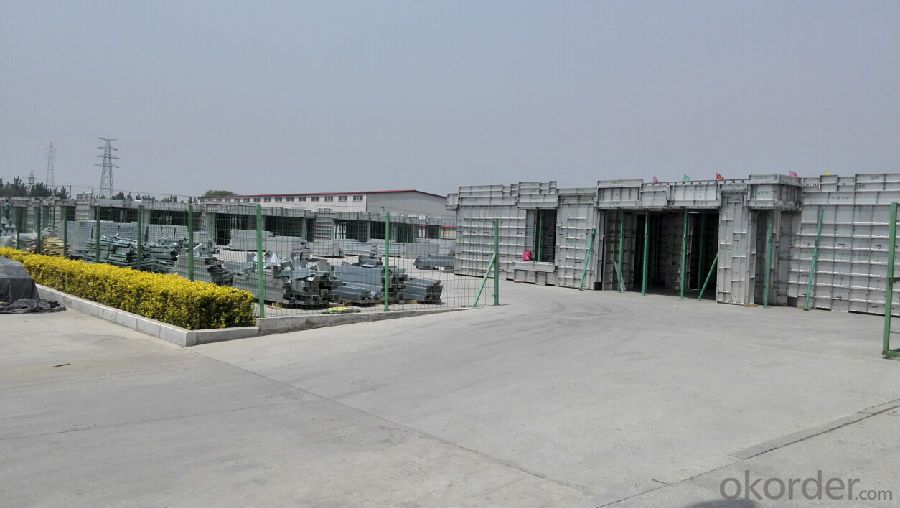


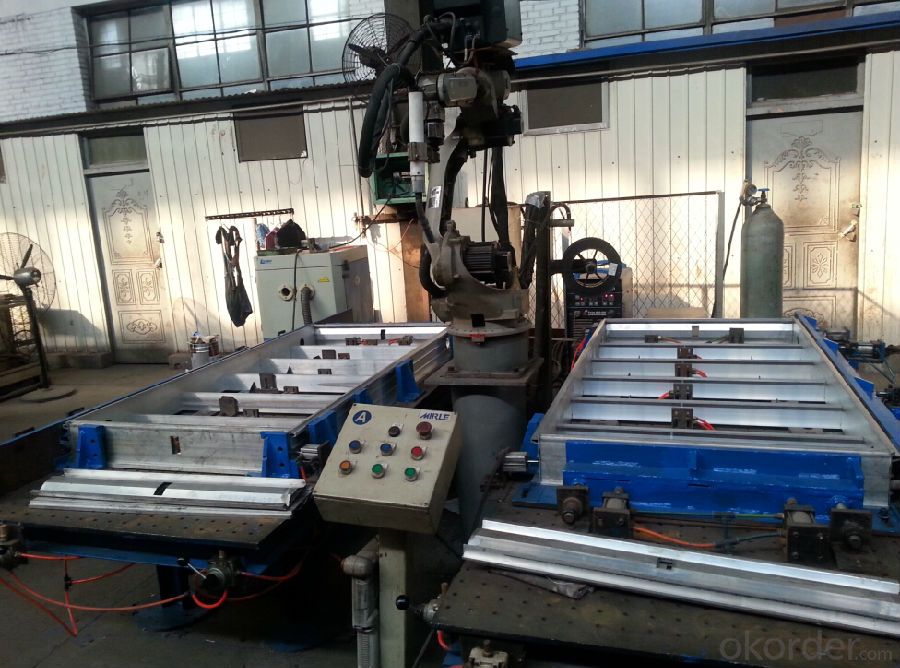
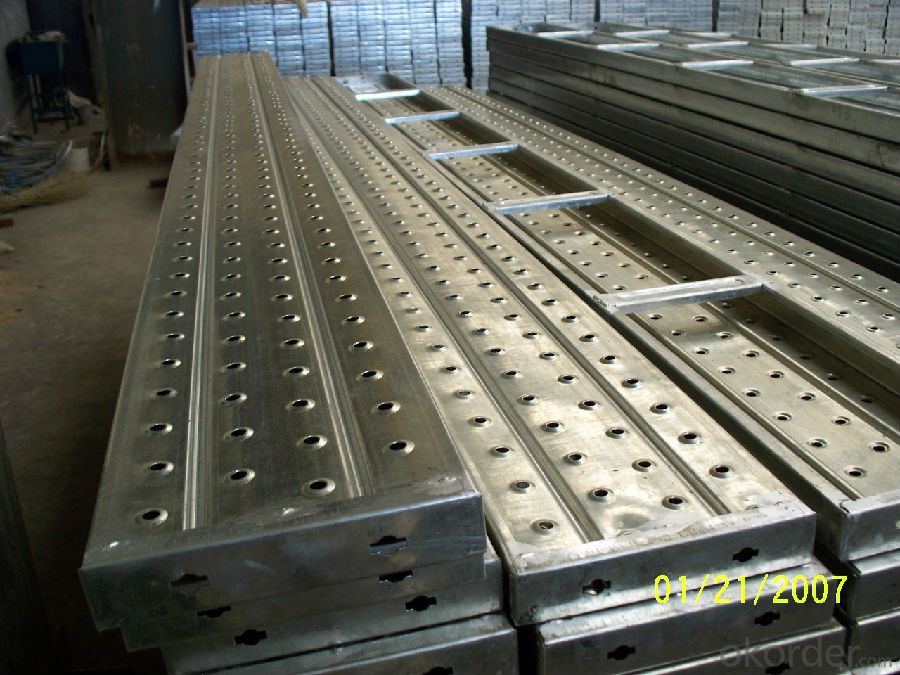
- Q:Can steel formwork be used for both small and large concrete pours?
- Yes, steel formwork can be used for both small and large concrete pours. Steel formwork provides durability, strength, and stability, making it suitable for various sizes of concrete pours. Its versatility allows for easy customization and adjustment to accommodate different project requirements.
- Q:Can steel formwork be used for road construction?
- Indeed, road construction can involve the utilization of steel formwork. This particular method is widely favored in road construction endeavors owing to its exceptional resilience, robustness, and adaptability. Given its ability to endure substantial loads and pressure, it is highly suitable for the creation of durable and enduring road surfaces. The assembly and disassembly of steel formwork is a straightforward process, thereby facilitating efficient construction procedures and expediting project completion. Moreover, this formwork can be reused on numerous occasions, rendering it an economically sensible choice for road construction projects.
- Q:Can steel formwork be used for both straight and curved concrete elements?
- Yes, steel formwork can be used for both straight and curved concrete elements. Steel formwork is highly versatile and can be easily adjusted and shaped to accommodate different design requirements. It offers excellent strength and durability, making it suitable for constructing both straight and curved concrete elements. The flexibility of steel formwork allows for the creation of complex and intricate shapes, making it ideal for projects that require curved elements such as architectural features, curved walls, or circular structures. Additionally, steel formwork provides a smooth and uniform surface finish, ensuring high-quality concrete results for both straight and curved elements.
- Q:What are the advantages and disadvantages of the application of the steel formwork and the plywood formwork in the construction?
- According to the area of the project, such as the number of layers to determine the type of templateFrom the perspective of saving wood, the state generally encourage the use of steel formwork
- Q:How does steel formwork prevent concrete segregation during pouring?
- Steel formwork prevents concrete segregation during pouring by providing a rigid and stable structure to hold the concrete in place. The steel panels are designed to be strong and durable, ensuring that they do not deform or flex under the weight and pressure of the concrete. This prevents the concrete from separating and segregating, which can occur if the formwork is not sturdy enough. Additionally, steel formwork is designed with tight joints and connections, minimizing the risk of leakage. This is important because if water from the concrete mixture leaks out, it can lead to the separation and settling of the aggregates, resulting in segregation. The tight joints also help in maintaining the desired shape and dimensions of the concrete structure. Furthermore, steel formwork is often coated or treated to prevent any chemical reaction between the concrete and the steel. This is important as such reactions can cause the concrete to segregate and weaken over time. By providing a strong and stable framework, preventing leakage, and avoiding chemical reactions, steel formwork ensures that the concrete mixture remains homogeneous and properly integrated, thus preventing segregation during pouring.
- Q:What are the different accessories required for steel formwork maintenance?
- Some of the different accessories required for steel formwork maintenance include formwork release agents, cleaning solutions, wire brushes, repair materials such as epoxy or cementitious grout, lubricants for hinges and pins, and protective coatings for corrosion prevention. Additionally, tools such as hammers, wrenches, and pliers may be needed for minor repairs or adjustments.
- Q:What are the features of the new building template?
- No ne1, long service life. Service life is 3 times the old template.2, low cost. Compared with the original old template, the cost per square meter decreased by 35%.3, strong, firm, high compressive strength. The pressure capacity per square meter is 2 times the old steel formwork.4, once pouring molding, no need to re plastering processing, improve the construction speed, and save construction costs.5, demolition, easy installation.ed to be used again after the molding process. The periphery of the template with plate fixation, and a groove can be inserted, the template is extended.
- Q:What are the typical lead times for manufacturing and delivering steel formwork?
- The typical lead times for manufacturing and delivering steel formwork can vary depending on various factors. Generally, lead times can range from a few weeks to a few months. The manufacturing lead time for steel formwork typically depends on the complexity of the design, the quantity required, and the capacity of the manufacturer. If the design is straightforward and the manufacturer has available capacity, the lead time can be relatively shorter, around 2-4 weeks. However, if the design is more intricate or if the manufacturer is facing high demand or limited capacity, the lead time can extend to 6-8 weeks or even longer. Once the steel formwork is manufactured, the delivery lead time will depend on the distance between the manufacturing facility and the project site, as well as the mode of transportation chosen. Local or regional deliveries can generally be completed within a few days to a week, whereas international shipments may take longer due to customs clearance and additional logistics involved. It is important to consider these factors when estimating the overall lead time for steel formwork delivery. It is worth noting that these lead times are just general estimates, and actual lead times can vary significantly depending on the specific circumstances. Therefore, it is recommended to consult with the manufacturer or supplier directly to get accurate lead time information for a particular steel formwork project.
- Q:How does steel formwork handle formwork repositioning?
- Steel formwork is known for its strength and durability, making it an ideal choice for projects that require frequent formwork repositioning. When it comes to handling formwork repositioning, steel formwork offers several advantages. Firstly, steel formwork is designed to be easily disassembled and reassembled, making it highly adaptable to changing project requirements. This means that the formwork can be quickly and efficiently relocated to accommodate changes in design or construction plans. Steel formwork systems often consist of modular components that can be easily interchanged, allowing for seamless formwork repositioning without compromising structural integrity. Secondly, steel formwork is known for its high load-bearing capacity. This makes it suitable for supporting heavy concrete loads during the construction process. When formwork needs to be repositioned, steel formwork systems can withstand the stresses and strains associated with lifting and moving, ensuring that the formwork remains stable and secure throughout the repositioning process. This high load-bearing capacity also allows for the use of larger formwork panels, reducing the number of components that need to be repositioned, thus saving time and labor. Additionally, steel formwork offers excellent dimensional stability. This means that once the formwork is repositioned, it maintains its original shape and dimensions, ensuring accurate and consistent concrete placement. This is particularly important for projects that require precise alignment and uniformity in the finished structure. Furthermore, steel formwork is highly resistant to warping, bending, and deformation, even when subjected to multiple repositioning cycles. This ensures that the formwork remains in optimal condition, reducing the need for repairs or replacements and minimizing downtime on the construction site. In conclusion, steel formwork is well-suited for handling formwork repositioning due to its adaptability, high load-bearing capacity, dimensional stability, and resistance to warping. These qualities make it a reliable and efficient choice for construction projects that require frequent formwork adjustments.
- Q:What are the different types of formwork accessories used with steel formwork?
- Steel formwork commonly utilizes various types of formwork accessories to enhance functionality, efficiency, and worker safety during construction. 1. Formwork clamps securely fasten formwork panels together, ensuring their stability and preventing movement during concrete pouring. They come in different sizes and designs to accommodate various formwork systems. 2. Formwork props are adjustable steel supports used to provide vertical stability and load-bearing capacity to formwork panels. This ensures worker safety while operating on the system. 3. Formwork ties firmly hold formwork panels in place, preventing bulging or deflection under the weight of concrete. Made of steel, they are available in different lengths and designs to meet project requirements. 4. Formwork connectors join formwork panels at corners or joints, ensuring a tight and secure fit. They come in various shapes and sizes, including corner connectors, wedge connectors, and pin connectors. 5. Formwork brackets support formwork panels horizontally, providing additional stability and reinforcement. They are commonly used in beam and slab construction to support formwork across long spans. 6. Formwork release agents are chemical substances applied to the formwork surface to prevent concrete adhesion. This allows for easy removal of the formwork after concrete curing, facilitating efficient and smooth formwork removal. In conclusion, these formwork accessories are vital for the success of a steel formwork system, providing the necessary support, stability, and reinforcement for efficient and safe construction of concrete structures.
1. Manufacturer Overview |
|
|---|---|
| Location | |
| Year Established | |
| Annual Output Value | |
| Main Markets | |
| Company Certifications | |
2. Manufacturer Certificates |
|
|---|---|
| a) Certification Name | |
| Range | |
| Reference | |
| Validity Period | |
3. Manufacturer Capability |
|
|---|---|
| a)Trade Capacity | |
| Nearest Port | |
| Export Percentage | |
| No.of Employees in Trade Department | |
| Language Spoken: | |
| b)Factory Information | |
| Factory Size: | |
| No. of Production Lines | |
| Contract Manufacturing | |
| Product Price Range | |
Send your message to us
Steel Formwork for High Residential Buildings with Recycling
- Loading Port:
- Tianjin
- Payment Terms:
- TT OR LC
- Min Order Qty:
- 200 pc
- Supply Capability:
- 100000 pc/month
OKorder Service Pledge
OKorder Financial Service
Similar products
New products
Hot products
Hot Searches
Related keywords
